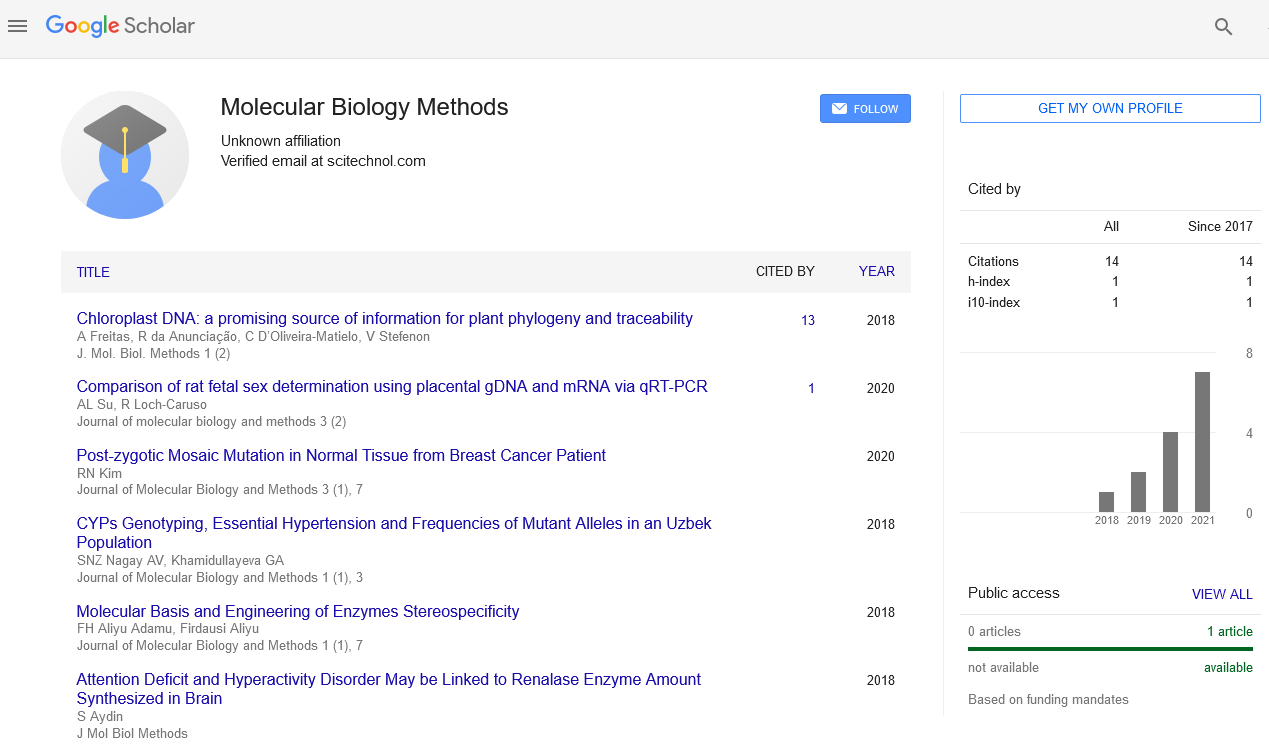Commentary, J Mol Biol Methods Vol: 7 Issue: 3
Cell Organelles: The Important Machinery of Life
John Moss*
1Department of Biology, Whitman College, Walla Walla, United States of America
*Corresponding Author: John Moss,
Department of Biology, Whitman College, Walla Walla, United States of America
E-mail: mossjohn@usr.edu
Received date: 26 August, 2024, Manuscript No. JMBM-24-151569;
Editor assigned date: 28 August, 2024, PreQC No. JMBM-24-151569 (PQ);
Reviewed date: 11 September, 2024, QC No. JMBM-24-151569;
Revised date: 18 September, 2024, Manuscript No. JMBM-24-151569 (R);
Published date: 25 September, 2024 DOI: 10.4172/JMBM.1000167
Citation: Moss J (2024) Cell Organelles: The Important Machinery of Life. J Mol Biol Methods 7:3.
Description
Cells, the fundamental units of life, are incredibly complex structures that perform a variety of functions necessary for the survival of living organisms. Within these cells, organelles play an important role, each contributing to the overall functionality and maintenance of the cell. These specialized structures can be compared to the organs in a body, with each organelle fulfilling specific tasks that sustain cellular life. One of the most well-known organelles is the nucleus, often referred to as the control center of the cell. It houses the cell’s genetic material, DNA, which contains the instructions for the synthesis of proteins and the regulation of various cellular processes. The nucleus is surrounded by a double membrane known as the nuclear envelope, which features pores that allow the selective exchange of materials between the nucleus and the cytoplasm. This selective permeability is vital for maintaining the appropriate environment for DNA and RNA processes.
Ribosomes are another key component found in all living cells. These small, ribonucleoprotein complexes are the sites of protein synthesis. Ribosomes can either be found floating freely in the cytoplasm or attached to the endoplasmic reticulum, forming what is known as rough Endoplasmic Reticulum (ER). The proteins synthesized by ribosomes are critical for numerous cellular functions, including metabolism, cell signaling and structural integrity. In prokaryotic cells, ribosomes are dispersed throughout the cytoplasm, while in eukaryotic cells, they can be found in several locations, including the cytoplasm and within organelles.
The Endoplasmic Reticulum (ER) is an extensive network of membranes that plays a key role in the synthesis and processing of proteins and lipids. The rough ER, studded with ribosomes, is primarily involved in the synthesis of proteins that are either secreted from the cell or incorporated into cellular membranes. Conversely, the smooth ER lacks ribosomes and is involved in the synthesis of lipids, metabolism of carbohydrates and detoxification of drugs and poisons. Additionally, the smooth ER plays a critical role in the storage of calcium ions, which are essential for muscle contraction and other cellular processes.
Following the ER, the Golgi apparatus acts as a processing and packaging center for proteins and lipids synthesized in the ER. Comprising a series of flattened, membranous sacs, the Golgi apparatus modifies, sorts and packages these molecules for delivery to their designated locations within or outside the cell. It is also involved in the production of lysosomes, which are essential for digestion and waste removal.
Lysosomes are membrane-bound organelles filled with digestive enzymes that break down waste materials and cellular debris. They play an important role in maintaining cellular homeostasis by recycling components of the cell and degrading damaged organelles. This process, known as autophagy, is vital for cell health and function. When lysosomes malfunction, it can lead to a build-up of cellular waste and various diseases, including lysosomal storage disorders.
Mitochondria, often referred to as the powerhouse of the cell, are responsible for generating Adenosine Triphosphate (ATP), the primary energy currency of the cell. These organelles have a unique double membrane structure, with the inner membrane being highly folded into structures known as cristae, which increases the surface area for energy production. Mitochondria are also involved in other critical processes, including the regulation of the cell cycle and apoptosis, the programmed cell death that is essential for development and maintaining tissue homeostasis.
 Spanish
Spanish  Chinese
Chinese  Russian
Russian  German
German  French
French  Japanese
Japanese  Portuguese
Portuguese  Hindi
Hindi 